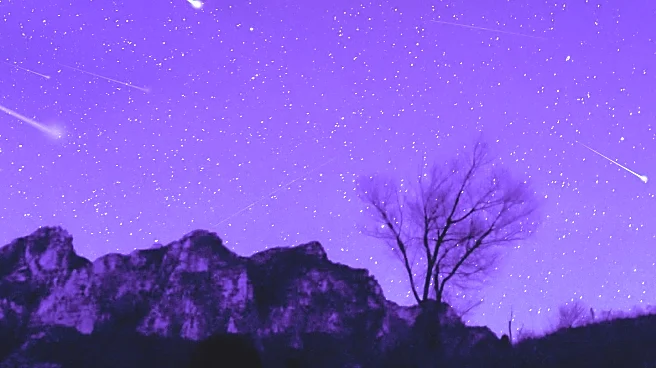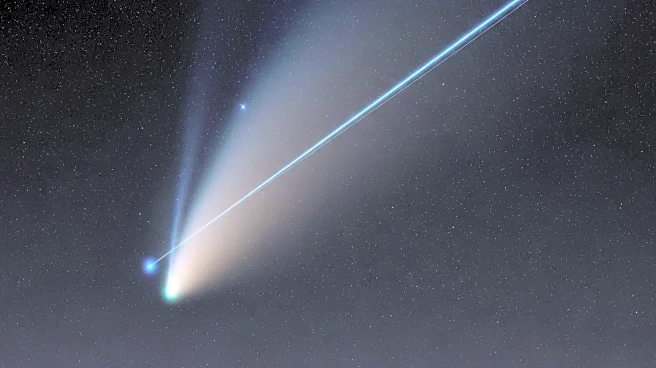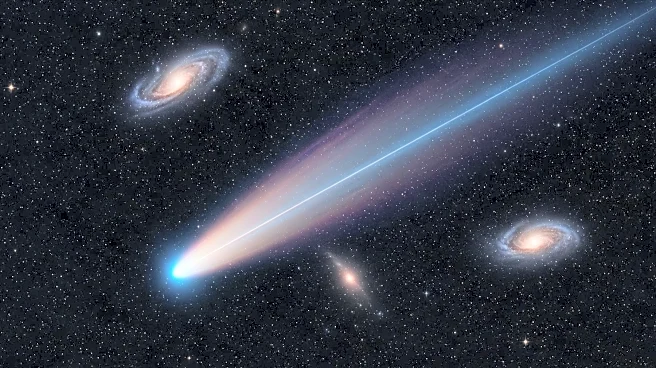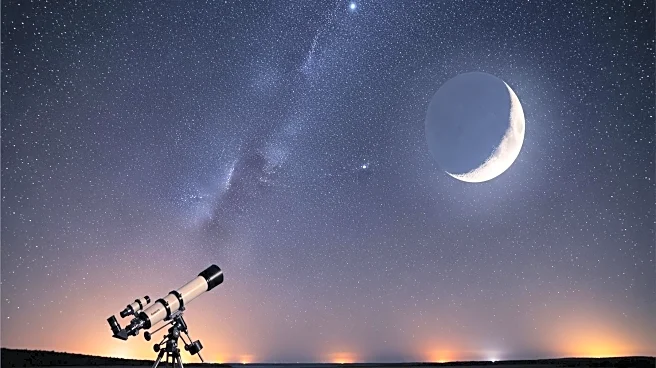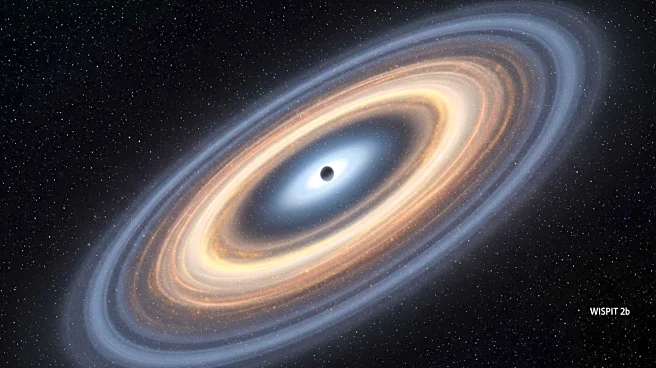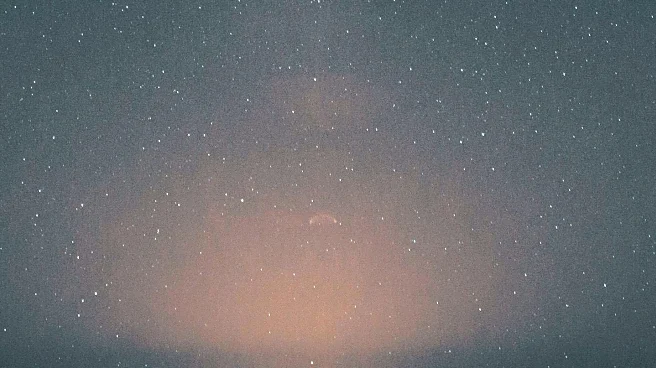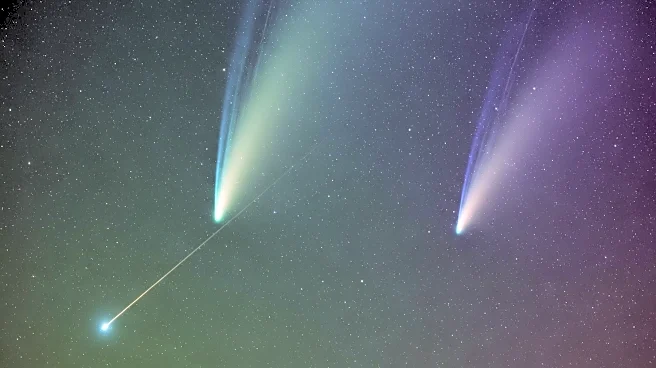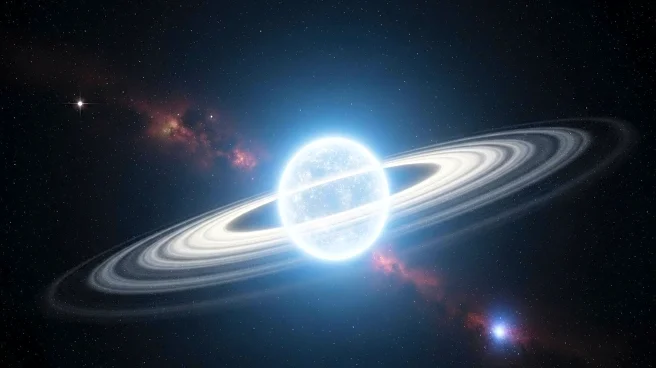What's Happening?
A new comet, named Lemmon (C/2025 A6), is set to become visible in the night sky, reaching its peak brightness on October 21, 2025. Discovered by the Mount Lemmon Survey in Arizona earlier this year, the comet is expected to be visible to the naked eye, a rare occurrence for such celestial bodies. The timing coincides with a new moon, providing optimal dark sky conditions for viewing. Nick James from the British Astronomical Association has noted the comet's impressive development, making it a worthwhile spectacle for early risers. This event follows the appearance of another interstellar object, 3I/ATLAS, earlier in the year, marking a notable period for comet sightings.
Why It's Important?
The visibility of Comet Lemmon presents a unique opportunity for both amateur and professional astronomers to observe a celestial event without the need for telescopic equipment. Such occurrences can inspire public interest in astronomy and science, potentially influencing educational pursuits and scientific curiosity. The comet's appearance also contributes to ongoing research and understanding of cometary behavior and characteristics, offering insights into the composition and trajectory of these ancient solar system travelers. This event underscores the importance of astronomical surveys and the role they play in discovering and tracking celestial phenomena.
What's Next?
As Comet Lemmon approaches its peak visibility, astronomers and enthusiasts are likely to organize viewing events and share observations online, fostering community engagement and collaboration. The comet's trajectory and brightness will continue to be monitored, providing data for future research. Additionally, the event may prompt discussions on the importance of funding and support for astronomical research and public science education initiatives. The comet's passage could also lead to increased interest in space exploration and the study of interstellar objects.
Beyond the Headlines
The appearance of Comet Lemmon highlights the cultural and historical significance of celestial events, which have been observed and recorded by civilizations throughout history. Such events can evoke a sense of wonder and connection to the universe, influencing art, literature, and philosophy. The comet's visibility may also raise awareness about the importance of preserving dark skies, free from light pollution, to ensure future generations can experience similar astronomical phenomena.


